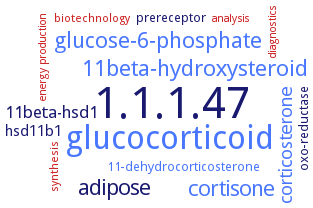Please wait a moment until all data is loaded. This message will disappear when all data is loaded.
Please wait a moment until the data is sorted. This message will disappear when the data is sorted.
25 - 35
stable for 1 week at 30°C (pH 6.5), completely inactivated in 30 min at 55°C, limited protection by glycerol, 84% activity after 30 min at 65°C in the presence of 2 M NaCl,
25 - 80
-
the enzyme shows considerable thermal stability after incubation for 30 min at temperature ranging from 25 to 80°C and maintains 20% of its maximum activity at 70°C
30
-
20 min, isoenzyme GlcDH-III, without NaCl, about 55% loss of activity
30 - 65
-
after 30 min at 30-65°C, the enzyme maintains high activity of more than 85%
42
-
the enzyme is stable up to 42°C
50.2
-
wild-type, melting temperature
52.9
-
mutant L252Q, melting temperature
63.2
-
mutant E170K, melting temperature
66
-
half-life: mutant Q252L 1.3 min, mutant Q252L/E170K 540 min
67.5
-
mutant Q252L, melting temperature
67.6
-
mutant K252Q, melting temperature
70
-
20 min, presence of 2 mM NaCl, complete inactivation of isoenzyme GlcDH-III and GlcDH-IV, isoenzyme GlcDH-IWG3 loses 30% of initial activity
70.3
-
wild-type, melting temperature
72.1
-
mutant F155Y, melting temperature
72.2
-
wild-type, melting temperature
75
-
half-life: approximately 3 h
75.9
-
mutant E170L/K252L, melting temperature
76.1
-
mutant E170K, melting temperature
76.7
-
mutant F155Y, melting temperature
79.2
-
mutant K252L, melting temperature
80
-
15 min, more than 90% remaining activity, pH 8.0
84.9
-
mutant E170K/Q252L, melting temperature
90.7
-
mutant E170K, melting temperature
40

-
pH 7.0, 10 min, stable up to
40
-
pH 6.5, 20 min, wild-type enzyme is stable
45

-
5 min, 40% loss of activity
45
-
20 min, isoenzyme GlcDH-IV, without NaCl, about 35% loss of activity, isoenzyme IWG3, without NaCl, about 10% loss of activity
50

stable at temperatures below 50°C
50
-
pH 7.0, 10 min, complete inactivation
50
-
5 min, complete inactivation
50
-
20 min, isoenzyme GlcDH-IWG3, without NaCl, complete loss of activity, isoenzymes GlcDH-II and GlcDH-IWG3 are stable in presence of 2 M NaCl
50
-
pH 6.5, 20 min, complete inactivation of wild-type enzyme, mutant enzyme E96K, E96G, E96A, Q252L and Y253C are stable
50
GlcDH-I1 is the most resistant isozyme against heat inactivation at 50°C (pH 6.5)
55

-
90% activity lost after 5 h in soluble native enzyme and GlcDHCys44 mutant enzyme, immobilized GlcDHCys44 mutant enyzyme loses 20% activity
55
-
pH 6.5, 20 min, about 65% loss of acticity of mutant enzyme Y253C, about 20% loss of activity of mutant enzyme Y252L, mutant enzyme E96K, E96G and E96A are stable
60

30 min, stable
60
the enzyme shows half-lives of 23100, 364.5, and 5.3 min after 10 min at 30°C, 40°C, and 50°C, respectively. The enzyme is inactive after 10 min at 60°C
60
-
pH 6.5, 20 min, complete loss of activity of enzyme Y253C about 95% loss of activity of mutant enzyme Y252L, about 30% loss of activity of mutant enzyme E96G, mutant enzymes E96K and E95A are stable
65

-
half-life of wild-type, 8.7 min, of mutant K252L, 7.1 min, of mutant E170L/K252L, 4.2 min
65
-
half-life of wild-type, below 0.05 min, of mutant E170K 8.7 min, of mutant Q252L, 0.5 min, of mutant E170K/Q252L, 5323 min
65
-
mutant E170K, half-life 3950 min
65
-
20 min, in presence of 2 M NaCl, isoenzyme GlcDH-III loses about 30% of initial activity, isoenzyme GlcDH-IV loses about 10% of initial activity, isoenzyme IWG2 is stable
65
-
pH 6.5, 20 min, complete loss of activity of mutant enzyme Q252L, about 50% loss of activity of mutant enzyme E96K, about 10% loss of activity of mutant enzyme E96A
65
wild-type enzyme retains 20% activity after 20 min at 65°C
65
wild-type enzyme retains 70% activity after 40 min at 65°C
additional information

thermostable enzyme
additional information
-
thermostability is highly increased by addition of NaCl
additional information
-
highly thermostable enzyme



 results (
results ( results (
results ( top
top






